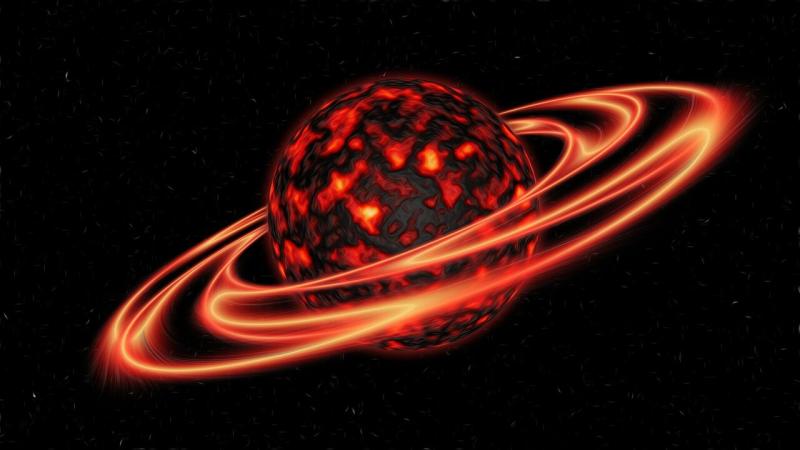Solar storms are back, threatening life as we know it on Earth
Category: News & Politics
Via: flynavy1 • 4 years ago • 9 commentsBy: Brian K. Sullivan, Bloomberg News



by Brian K. Sullivan, Bloomberg News
Credit: CC0 Public Domain
A few days ago, millions of tons of super-heated gas shot off from the surface of the sun and hurtled 90 million miles toward Earth.
The eruption, called a coronal mass ejection, wasn't particularly powerful on the space-weather scale, but when it hit the Earth's magnetic field it triggered the strongest geomagnetic storm seen for years. There wasn't much disruption this time—few people probably even knew it happened—but it served as a reminder the sun has woken from a yearslong slumber.
While invisible and harmless to anyone on the Earth's surface, the geomagnetic waves unleashed by solar storms can cripple power grids, jam radio communications, bathe airline crews in dangerous levels of radiation and knock critical satellites off kilter. The sun began a new 11-year cycle last year and as it reaches its peak in 2025 the specter of powerful space weather creating havoc for humans grows, threatening chaos in a world that has become ever more reliant on technology since the last big storms hit 17 years ago. A recent study suggested hardening the grid could lead to $27 billion worth of benefits to the U.S. power industry.
"It is still remarkable to me the number of people, companies, who think space weather is Hollywood fiction," said Caitlin Durkovich, a special assistant to President Joe Biden and senior director of resilience and response in the National Security Council, during a talk at a solar-weather conference last month.
The danger isn't hypothetical. In 2017, a solar storm caused ham radios to turn to static just as the Category 5 Hurricane Irma was ripping through the Caribbean. In 2015, solar storms knocked out global positioning systems in the U.S. Northeast, a particular concern as self-driving cars become a reality. Airline pilots are at greater risk of developing cataracts when solar storms hit. Female crew see higher rates of miscarriages.
In March 1989, a solar storm over Quebec caused a province-wide outage that lasted nine hours, according to Hydro-Quebec's website. A 2017 paper in the journal of the American Geophysical Union predicted blackouts caused by severe space weather could strike as much as 66% of the U.S. population, with economic losses reaching a potential $41.5 billion a day.
To head off such a catastrophe, President Barack Obama's administration laid out a strategy to begin raising awareness of the dangers of massive solar storms and to assess the risks they pose. Last year, President Donald Trump signed the ProSwift bill into law, which aims to build up technology to improve forecasting and measurement of space weather events.
There's debate among scientists about how much can be done to shield vulnerable parts of the planet's infrastructure from the effects of solar storms. Steps such as using non-magnetic steel in transformers and installing more surge protectors in the grid could bolster resistance, but in the end the best defense against catastrophe might be better forecasting.
That would go a long way toward helping utilities prepare for shortages and making sure there are paths to back up their systems in case they lose power. In weeks, a new model developed by the University of Michigan will come online to help improve Earth-bound forecasting.
In the U.K., National Grid is building up its supply of spare transformers and conducting regular drills to deal with a major space weather event, said Mark Prouse, deputy director of the Department for Business, Energy and Industrial Strategy, a ministerial department.
Within the past 15 years, the U.S. and U.K. have built space weather forecasting centers that deliver daily outlooks on what may be coming from the sun for airlines, power grids, satellite owners and anyone else threatened by solar flares. While Earth-bound observers can see explosive storms erupt on the sun, they can't tell the true nature of the threat—exactly how potent it is—until the blast reaches a set of satellites 1 million miles from the planet. At that point, there is only 60 to 90 minutes until it hits Earth.
"Our ability to understand and predict the solar cycle is still very limited," said William Murtagh, director of the U.S. Space Weather Prediction Center.
Just as utilities can prepare for a severe thunderstorm by staging repair workers nearby, similar precautions could be taken ahead of a solar storm, according to Mark Olson, the reliability assessment manager for the North America Electric Reliability Corp., a nonprofit answerable to the U.S. and Canadian governments.
"You have the potential for very large areas to have voltage instability," Olson said. "Situational awareness is the key here, just like in terrestrial weather events."
Solar storms have their roots in an 11-year cycle that shifts the polarity of the sun's magnetic field. The magnetic forces at work on the sun get tangled during the process, and can punch out through the surface, sending the sun's plasma into outer space and potentially triggering storms on Earth.
The most powerful geomagnetic storm ever recorded resulted in the 1859 Carrington Event, when telegraph lines electrified, zapping operators and setting offices ablaze in North America and Europe. If a storm of that magnitude were to hit today, it would likely cut power to millions if not billions of people.
"When I first started on this road and was briefed on space weather I raised an eyebrow," said Prouse. "It is much more mainstream and some of the mystification is gone. You can now raise it as a risk and not get laughed at."
Explore further
Moon mission delays could increase risks from solar storms
©2021 Bloomberg L.P.
Distributed by Tribune Content Agency, LLC



Just something else to occupy those with inquisitive minds.....
They cause Global Warming, too!
yep... solar min/max. Get the heavy sunscreen out
What type of radiation are airline crews subjected to? RF or ionizing? That's important to know. To me anyway
Thy this...
NASA - Modeling Radiation Exposure for Pilots, Crew and Passengers on Commercial Flights
or this more recent article..
Radiation Exposure - Flight Safety Foundation
Thanks. It looks ionizing radiation that's teh culprit and that makes sense. They should have the aircrew wear thermoluminescent dosimeters which measure the amount of ionizing radiation a person receives while doing their job
Would Faraday cages do any good?
Not at that frequency. The wavelength of gamma rays is so short that it can penetrate through the skin of the aircraft which in effect is a Faraday cage.
I'm much more concerned about CME's, GRB's, EMP's, and really big asteroids hitting the Earth, than future sea levels.
Here's a good read about a fictional CME